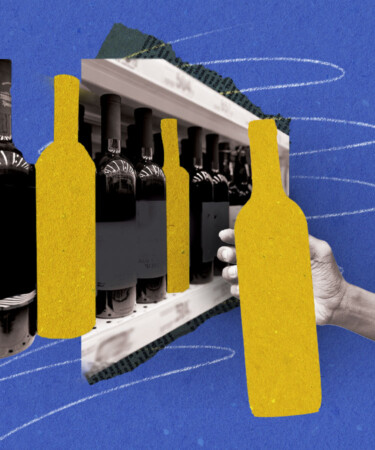For every incredibly popular style and region of wine, there’s an unsung category lying in wait for its moment in the sun. The wine world is full of trends, but popularity doesn’t always mean better quality. Because so many consumers buy wine based on what they’re familiar with — a totally reasonable way to purchase wine, by the way — it can sometimes be tough to get people to put aside their preconceived notions and try something new.
To suss out the underappreciated wines flying below the radar, we asked sommeliers and wine pros to tell us the styles and regions that they wish got a little more love. Here’s what they said:
The most underrated wines, according to sommeliers
- Dry rosé
- Cava
- Rosé
- Aged Muscadet
- The Savoie region
- Hunter Valley Sémillon
- Colares DOC, Portugal
- Riesling
- Emerging U.S. wine regions
- Grüner Veltliner
- Nerello Mascalese
“The most underrated wines for me are dry rosés. They exist in an amazingly diverse array of styles and are an absolutely excellent match with most foods on a mixed table. A bottle of Domaine Tempier Rosé, for example, can feel equally at home with light seafood and rich poultry.” —Francis Kulaga, beverage director, Birch & Rye, San Francisco
“The most underrated wine style is Cava, the classic Spanish sparkling wine. Everyone uses Prosecco as their back up to Champagne, but the wines in Cava are made the exact same way, for half the price! Some of my favorite, affordable producers include Roger Goulart, Marrugat, and the classic Freixenet.” —Andrew Elder, service, beverage and wine, JONT, Washington, D.C.
“Rosé wine. For most people, it’s an inexpensive chugger in the hot summer months, but there are a tremendous number of serious rosé wines (with great value) that are drinkable young but ageable for years, even decades. In addition, because of the huge variety of rosé styles, it’s tremendously versatile for pairing with food — even desserts.” —Bin Lu, executive chef, Blue Rock, Washington, Va.
“Muscadet with age. Always. (Why are you closing out that 2014 Muscadet cru? I’ll buy it!!) Seriously, the grape is Chardonnay’s sibling, and just like Chardonnay, it is inherently neutral in character. Expert winemaking and the right sites can produce really stunning wines. I love drinking good cru Muscadet with six, eight, 10 years of age.” —Matt Stamp, sommelier and founder, Compline Restaurant and Wine Shop, Napa, Calif.
“The Savoie is such an underrated region in general! They make sparkling and still wine with grapes such as Chardonnay and Pinot Noir, but also with lesser-known local varietals such as Mondeuse and Altesse. It is a region where you can find exceptional wines that also give great value. I personally love the wines from Yves Duport; their Altesse is a great place to start getting to know the region.” —Bella Babbit, wine director, NoMad, London
“Sémillon from Australia’s Hunter Valley does everything Sauvignon Blanc can do when young, then changes brilliantly with age into something nutty and complex. Tyrrell’s Vat 1 is one of the most age-worthy wines on Earth.” —Rick Arline, director of wine, Hotel Per La, Los Angeles
“The DOC of Colares in Portugal is one that the cognoscenti preach about but is largely overlooked by the masses. Amongst the white (largely a unique form of Malvasia) and red vines (Ramisco) planted in the sands around the castle in Sintra, you will find vines predating (and untouched by) phylloxera. Nearly impossible to plant new vines and with beachfront property at a premium, these wines that rival Burgundy and Barolo in quality are sadly in jeopardy. —Hamilton Weaver, sales representative, Skurnik Wine, Philadelphia
“It feels like we’ve been saying ‘consumers don’t care about Riesling’ for years, but I find Riesling to be some of the hardest to turn a new customer onto. Aromatic, layered, honeyed mouthfeel-style whites are some of my absolute favorites. They’re warming, food friendly, and textural — but consumers often automatically assume that means sweet and zone out when you suggest them. Also, these regal varietals often can come from Old World countries and have a long aging process and hence a higher price tag, making them a hard sell to someone less comfortable with taking a chance on that style.” —Sande Friedman, wine director, Di Bruno Bros., Philadelphia
“The emerging wine regions in the U.S. are so underrated. There are now producers working naturally, moving toward organic and biodynamic viticulture in places we never thought possible: Texas, the Finger Lakes of upstate New York, and others. It’s exciting to have the opportunity to support our local food systems through beverage!” —Paul Lysek, service manager, Safta, Denver
“Grüner Veltliner. It comes from Austria, though many producers are now growing it in the States. Its classic flavors are citrus, starfruit, white pepper, gooseberry, and minerals. The style can range from something super light and refreshing (something I would suggest for the New Zealand Sauvignon Blanc crowd), but it can also be a serious food-pairing wine.” —Dawn Trabing, beverage director, Four Seasons Hotel, Philadelphia
“Nerello Mascalese. It comes from an active volcano region in Sicily and the soil there, in parts, is black from volcanic ash. As a result, the wines are expressive, a little smoky, and herbaceous. It’s a nice Burgundy-adjacent option.” —Frank Kinyon, beverage and service director, a.kitchen+bar, Philadelphia
